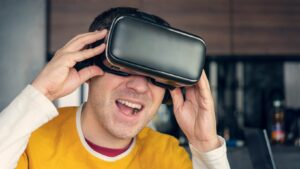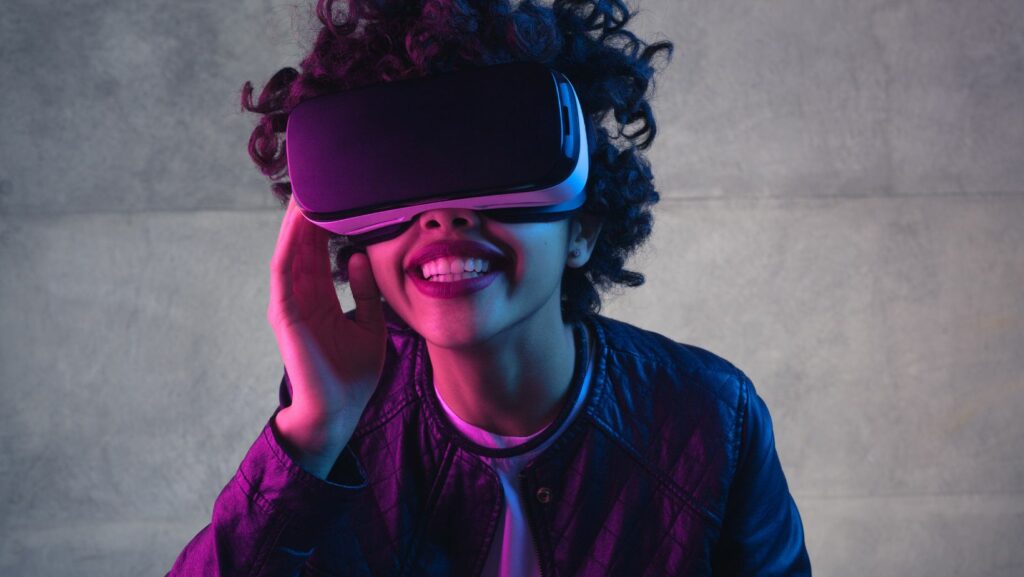Augmented reality (AR) apps on Android are transforming the way we interact with the world around us, blending digital content with the real world in real-time. These applications use your smartphone’s camera to superimpose graphics, sounds, and even haptic feedback over what you see around you. As AR technology advances, the range of experiences it offers expands, making it a hot topic in both consumer and business sectors.
What is Ar Apps on Android
How AR Works on Android Devices
 AR operates on Android devices through a combination of hardware and software that processes and interprets images and interactions. Android smartphones typically use cameras, sensors, and processors to capture and analyze the real world. The core of AR functionality on these devices is supported by ARCore, Google’s platform for building AR experiences. ARCore enables apps to understand the environment, interact with information about places, and mix virtual content with the real world. Android devices determine the location and orientation of the device with respect to the world around it through three fundamental capabilities: motion tracking, environmental understanding, and light estimation. These capabilities enable Android devices to anchor virtual objects in a 3D space, offering users immersive AR experiences such as interactive gaming, educational applications, and innovative tools for interior design and shopping.
AR operates on Android devices through a combination of hardware and software that processes and interprets images and interactions. Android smartphones typically use cameras, sensors, and processors to capture and analyze the real world. The core of AR functionality on these devices is supported by ARCore, Google’s platform for building AR experiences. ARCore enables apps to understand the environment, interact with information about places, and mix virtual content with the real world. Android devices determine the location and orientation of the device with respect to the world around it through three fundamental capabilities: motion tracking, environmental understanding, and light estimation. These capabilities enable Android devices to anchor virtual objects in a 3D space, offering users immersive AR experiences such as interactive gaming, educational applications, and innovative tools for interior design and shopping.
Key Features of AR Apps for Android
Real-Time Interaction
AR apps for Android enable real-time interaction between the digital and physical worlds, making them a powerful tool for users. Android AR apps process real-time data from the device’s camera and sensors, allowing digital overlays to react instantaneously to changes in the surrounding environment. This feature equips users for applications ranging from gaming to educational simulations. For example, in a gaming scenario, objects respond immediately as a player moves or interacts with the environment, enhancing the immersive experience.
3D Object Visualization
The visualization of 3D objects stands as a cornerstone feature in Android AR apps. These apps use complex algorithms powered by ARCore to render realistic 3D models that integrate seamlessly with the user’s real-world view. Android devices display these objects by tapping into capabilities such as spatial awareness and depth sensing. Consequently, users can see virtual furniture in their rooms before buying it or explore a new car’s interior, providing them with interactive and valuable insights that go beyond flat, two-dimensional images.
Popular AR Apps Available on Android
 Building on the transformative capabilities of AR apps on Android that merge digital content with real-world experiences, this section explores some of the most popular augmented reality applications available for Android users. They enhance gaming and educational experiences by leveraging the sophisticated ARCore technology to render 3D visuals seamlessly into the user’s environment.
Building on the transformative capabilities of AR apps on Android that merge digital content with real-world experiences, this section explores some of the most popular augmented reality applications available for Android users. They enhance gaming and educational experiences by leveraging the sophisticated ARCore technology to render 3D visuals seamlessly into the user’s environment.
AR gaming apps turn the environment around the player into an interactive gaming space. “Pokémon GO” stands as one of the most widely recognized AR games, where players catch Pokémon appearing in their real-world location. The app uses location data and AR technology to superimpose Pokémon into the surrounding landscape. Moreover, “Ingress Prime” transforms real-world streets and landmarks into a global game board, encouraging players to visit new places as they engage in virtual battles and alliances. These apps not only provide entertainment but also encourage physical activity and social interaction.
Challenges and Limitations of AR Apps on Android
 While AR apps on Android are creating new dimensions in gaming and education, they’re not without their challenges. The performance of these apps heavily depends on the device’s hardware capabilities which can limit accessibility for users with older or less advanced smartphones. Additionally, while ARCore has broadened the scope for developers, the variability in Android devices regarding camera quality and processing power can affect the consistency and quality of the AR experience. Despite these hurdles, the future of AR on Android looks promising as technology advances and more developers are drawn to its potential. The ongoing improvements in smartphone technology and AR frameworks are likely to address these limitations, paving the way for more robust and universally enjoyable AR experiences.
While AR apps on Android are creating new dimensions in gaming and education, they’re not without their challenges. The performance of these apps heavily depends on the device’s hardware capabilities which can limit accessibility for users with older or less advanced smartphones. Additionally, while ARCore has broadened the scope for developers, the variability in Android devices regarding camera quality and processing power can affect the consistency and quality of the AR experience. Despite these hurdles, the future of AR on Android looks promising as technology advances and more developers are drawn to its potential. The ongoing improvements in smartphone technology and AR frameworks are likely to address these limitations, paving the way for more robust and universally enjoyable AR experiences.



